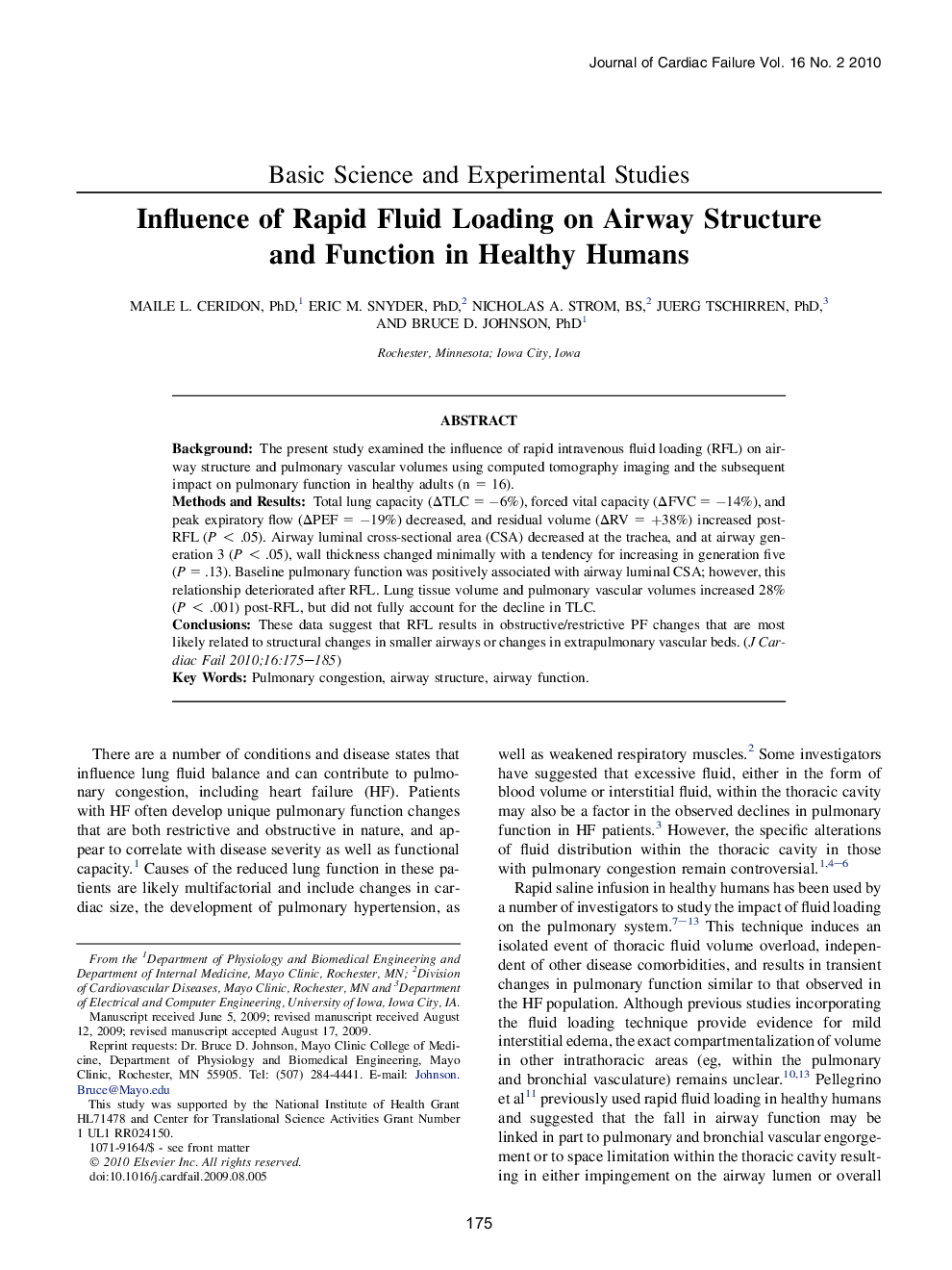| Article ID | Journal | Published Year | Pages | File Type |
|---|---|---|---|---|
| 5983944 | Journal of Cardiac Failure | 2010 | 11 Pages |
BackgroundThe present study examined the influence of rapid intravenous fluid loading (RFL) on airway structure and pulmonary vascular volumes using computed tomography imaging and the subsequent impact on pulmonary function in healthy adults (n = 16).Methods and ResultsTotal lung capacity (ÎTLC = â6%), forced vital capacity (ÎFVC = â14%), and peak expiratory flow (ÎPEF = â19%) decreased, and residual volume (ÎRV = +38%) increased post-RFL (P < .05). Airway luminal cross-sectional area (CSA) decreased at the trachea, and at airway generation 3 (P < .05), wall thickness changed minimally with a tendency for increasing in generation five (P = .13). Baseline pulmonary function was positively associated with airway luminal CSA; however, this relationship deteriorated after RFL. Lung tissue volume and pulmonary vascular volumes increased 28% (P < .001) post-RFL, but did not fully account for the decline in TLC.ConclusionsThese data suggest that RFL results in obstructive/restrictive PF changes that are most likely related to structural changes in smaller airways or changes in extrapulmonary vascular beds.
